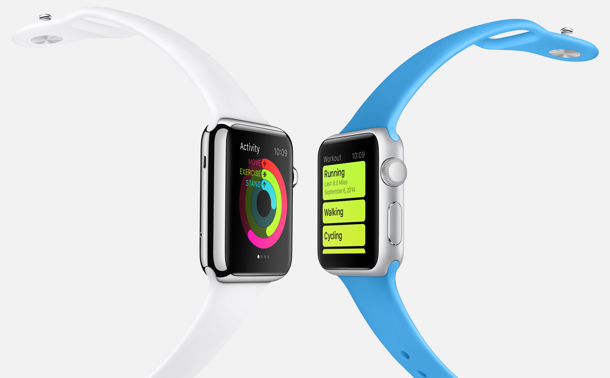
This morning Apple announced its much anticipated smartwatch, called Apple Watch. It will be released “early 2015,” which I’m thrilled to say is also when my book about self-tracking will be released! My book, entitled Trackers: How Technology Is Helping Us Monitor & Improve Our Health, is about how technology is fundamentally changing how we track our daily health and care for our bodies. The book tells the stories behind the Fitbit activity tracker, food-logging app MyFitnessPal, personal genomics company 23andMe, and other self-tracking pioneers.
There’s nothing in the new Apple Watch that usurps the functionality of those existing tracking products. But what the Apple Watch will do is take self-tracking mainstream in a big way.
When I began writing my book, Trackers, I knew it had to be about more than the technology. Because at the time I started, I couldn’t know what tracking product Apple – or indeed any other company – would eventually release. I only knew that newer and better tracking products would come out; and that Apple’s would be a game-changer. So in writing my book, I prepared for that. Instead of writing about how to use the existing products, I focused on the philosophy and usefulness of health tracking.
This promotional video is a great overview of what Apple Watch will bring to the self-tracking table:
I should note firstly that Apple Watch is not solely focused on health tracking. The tracking is just one of many features that Apple Watch appears to have. Indeed its timekeeping and social features were highlighted in Apple CEO Tim Cook’s keynote today. But I personally think the self-tracking functionality in Apple Watch will be one of the most appreciated features, when the new watch becomes available in early 2015. Apple says that its watch is “made to measure all the ways you move.” Here’s how Apple explains the tracking features:
Apple Watch unites the capabilities of an all-day fitness tracker and a highly advanced sports watch in one device you can wear all the time. It can track a wider variety of activities because it’s able to collect more types of data. It uses an accelerometer to measure your total body movement. It has a custom sensor that can measure intensity by tracking your heart rate. And it uses the GPS and Wi‑Fi in your iPhone to track how far you’ve moved.
Note that you’ll need an iPhone in order to use the Apple Watch. But that’s hardly surprising, in this era of big tech companies tying you into their platforms.
3 Rings To Rule Them All
OK that’s the hardware side of it. There’s also the software.
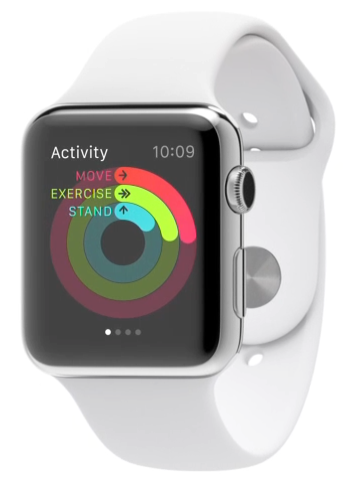
The watch will come with an “Activity app,” which will be a circular visualization of your daily health.
The Activity app on Apple Watch provides a simple and powerful graphic of your daily activity, with three rings telling you everything you need to know. The Move ring shows how many calories you’ve burned. The Exercise ring shows how many minutes of brisk activity you’ve done. And the Stand ring shows how often you’ve stood up to take a break from sitting. The goal? Sit less, move more, and get some exercise by completing each ring every day.
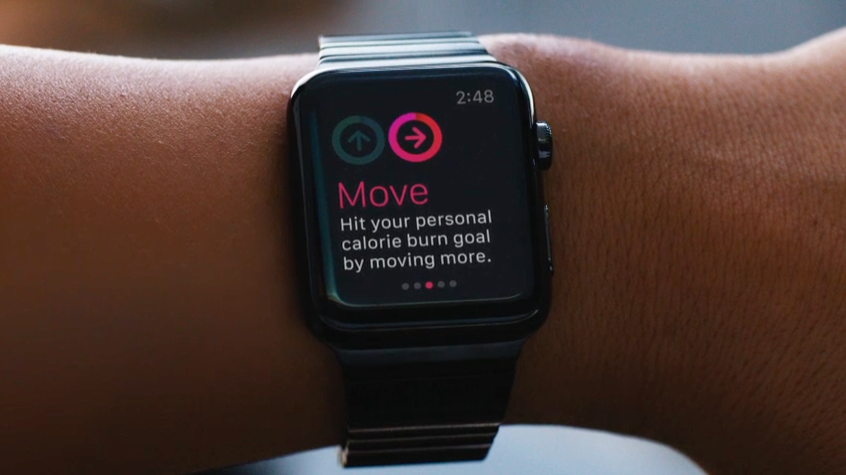
I think the key part of the software will be how Apple Watch motivates you to “lead a healthier life by being more active” (that quote is from the video):
Each week, Apple Watch suggests a new Move goal for how many active calories to burn per day, based on your recent history. Adjust it up or down until it feels just right. You close the Move ring when you meet your personal active calorie burn goal for the day.
This gets at the heart of self-tracking, and what my book is all about. In order to stay healthy, you need to understand your body and what its needs are. Technology on its own doesn’t do that, but it can help. That’s what fascinated me about Fitbit, MyFitnessPal and even the controversial 23andMe. This is what excites me about the new Apple Watch too – it’ll help you monitor and maintain your health. Whether that’s through exercise or the watch simply telling you that you’re sitting down too much, Apple Watch will help you “minimize your sedentary time throughout the day.”
The iPhone will complement the Apple Watch, in that it will enable you to “track your progress over time.”
Apple Watch lets you see your daily activity at a glance. To see your progress and trends over longer periods of time, there’s Fitness — an Apple Watch companion app on your iPhone. You can view your activity history, workouts, and achievements by the day, the week, and the month. And it’s easy to zoom in on the details to see just how far you’ve come.
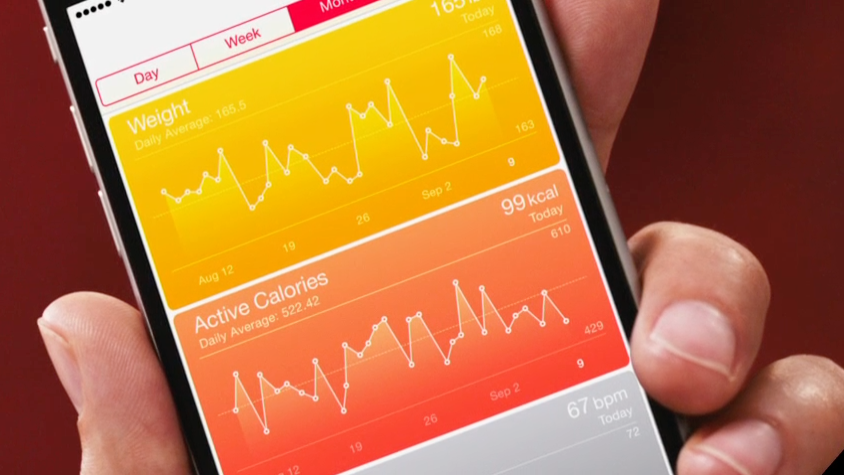
Apple Watch will also be able to connect with third party apps, like Fitbit:
There’s also a Health app on iPhone that allows you to share your activity and workout data with your favorite third-party health and fitness apps.
In conclusion, the Apple Watch looks to be a highly advanced – and great looking – smartwatch. Plus it turns out that the publication of my Trackers book will be perfectly timed to coincide with its release. So when you buy your Apple Watch in early 2015, I hope you buy my book too!

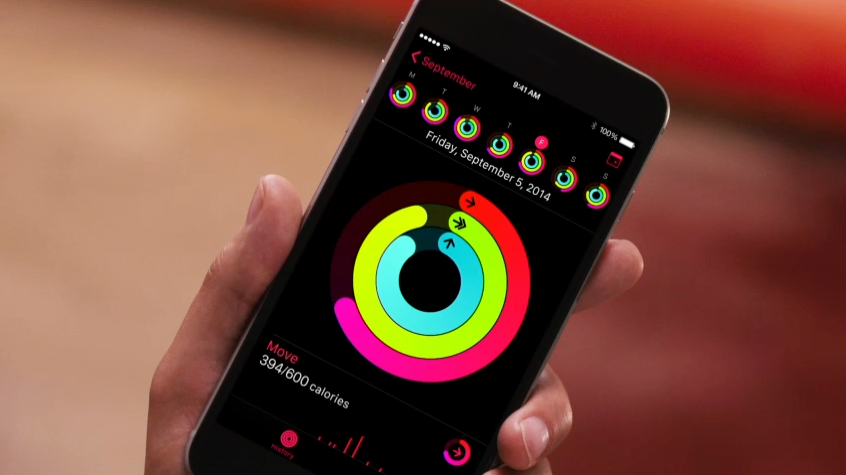
If only we could get our hands on the book earlier!
I wish that too! But I’m pleased at least that the book will come out about the same time as Apple Watch.